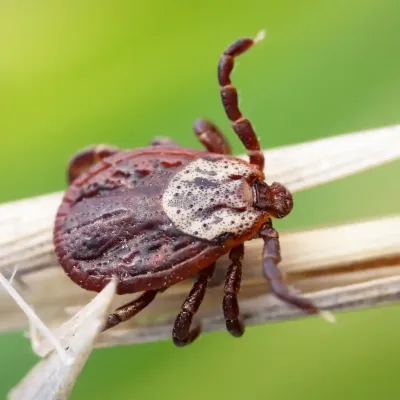About American Dog Ticks

Appearance: Bright red to brown teardrop-shaped body; oval, flat; 1/8 of an inch and 5/8 of an inch when engorged
Region: Rocky Mountain states
Diet: This species is considered a three-host tick because each feeding stage (larva, nymph, and adult) requires a different host. Between March and July is when these ticks become more active and feed. Rodents such as chipmunks and squirrels are commonly fed on by larvae and nymphs while adult ticks prefer to feed on medium to large animal hosts, like sheep, deer, and humans.
Habitat: Rocky Mountain Wood ticks prefer woodlands with low-growing vegetation and are commonly found around trails and grasslands. These habitats help for easily transferring to a host who will brush against vegetation.
Threats: The Rocky Mountain tick is a primary vector for Rocky Mountain spotted fever as well as Colorado tick fever and tularemia. Tick bites can cause tick paralysis when they feed for at least 5-6 days. If the tick is discovered and removed early, symptoms can subside within 1-2 days.
Control: To reduce the risk of exposure to ticks, keep grass cut low, remove weeds, and keep woodpiles away from the home. When outdoors, wear long-sleeved shirts and long pants tucked into boots and avoid areas where ticks are common like leaf piles, high grass, and wooded areas. Examine people and pets for ticks in common locations like in and around ears, underarms, and in hair or fur.
